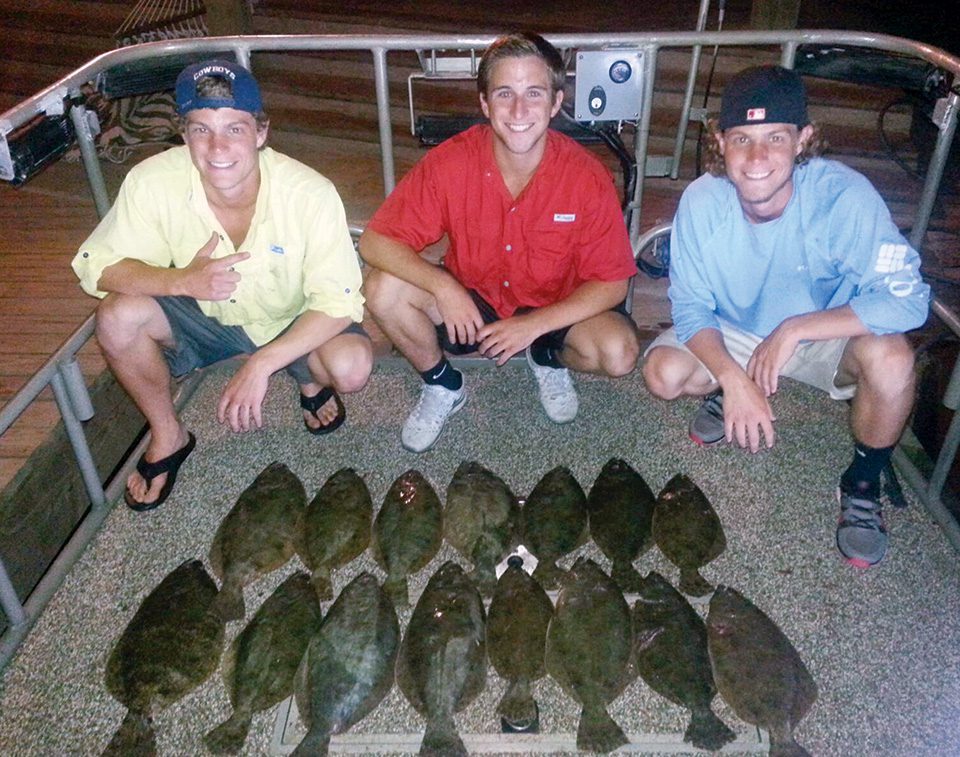There aren’t many activities as rewarding on a warm August night as gigging flounder. It’s way more comfortable than slogging it out with a rod-and-reel in the blazing dog-day sun, and oftentimes it’s a much more productive way to collect a fish dinner… or breakfast.
Here are a few tips for anyone interested in learning to gig doormats:
• Pick a Night—Watch the forecast and select a calm night with limited moonlight. Wind makes seeing the bottom difficult, because it breaks up the surface and stirs up silt. With a bright moon, flounder will actually see you silhouetted and spook before you can get to them.
Gigging is easiest a couple hours before and during a dead low tide, when fish are forced into open-water shallows. When the tide is in, they push way up into the backwaters where they’re tough to locate.
• Choose Your Location—Good gigging locations are the same types of places you’d fish for flounder with a rod and reel. Flounder are current oriented just like any inshore species, so you’ll find more of them on shorelines around marsh drains and other locations where the tide flushes food over them.
Which brings up another key element: food. Flounder aren’t too picky about their forage. They’ll eat anything living that passes over them, from crabs and mud minnows to shrimp and menhaden. If you’re not seeing some type of forage in the area you’re shining, it’s time to move.
A sandy bottom is generally best for gigging. Flounder prefer sand over mud, and if you’re wading, you will too. Sandy areas usually provide better visibility, also.
• Keep Eyes Peeled—Gigging a flounder is the easy part. It takes practice to effectively spot them. Flounder sit on the bottom, with everything buried in a thin layer of sand except their eyes. They are very well camouflaged, so you’re actually looking for the shape or outline of a fish more than you are looking for the fish itself. Their eyes are also reflective if the light hits them right, so those are the things you’re looking for, an outline and their eyes.
• Hire a Guide—Like any other type of fishing, the quickest way to learn is to go out with someone who already knows what they’re doing. This is especially true for a pursuit like flounder gigging, which requires specialized gear.
With a good spotlight and a gig, it is definitely possible to kayak, paddleboard or wade the shallows in search of flatties, but it’s much easier to find and stick them with the help of a seasoned pro. A captain who specializes in the sport will have a shallow-draft vessel equipped with powerful lights to shine in the water and spot the outlines of flatfish sitting on the bottom.
What you learn and see in these optimal conditions are a huge head start for when you’re ready to go after them on your own.
